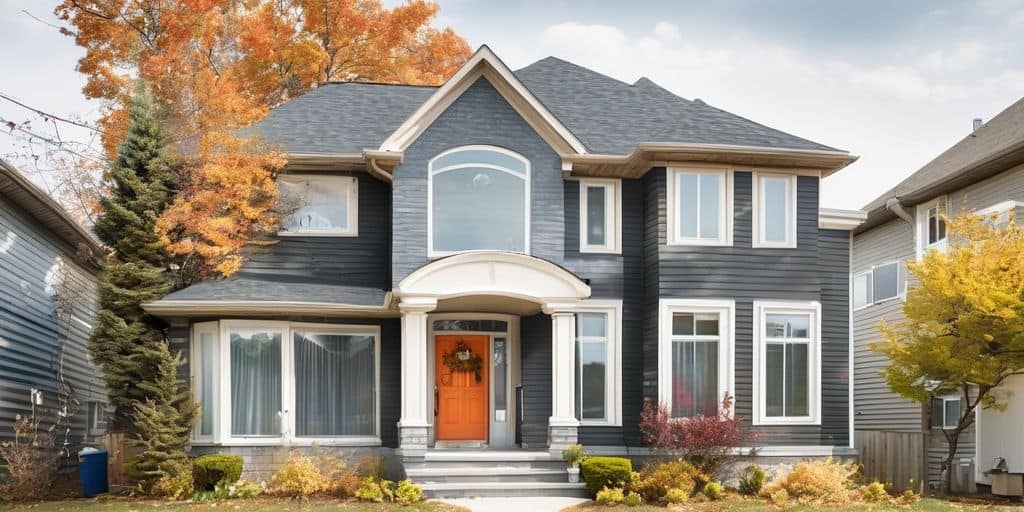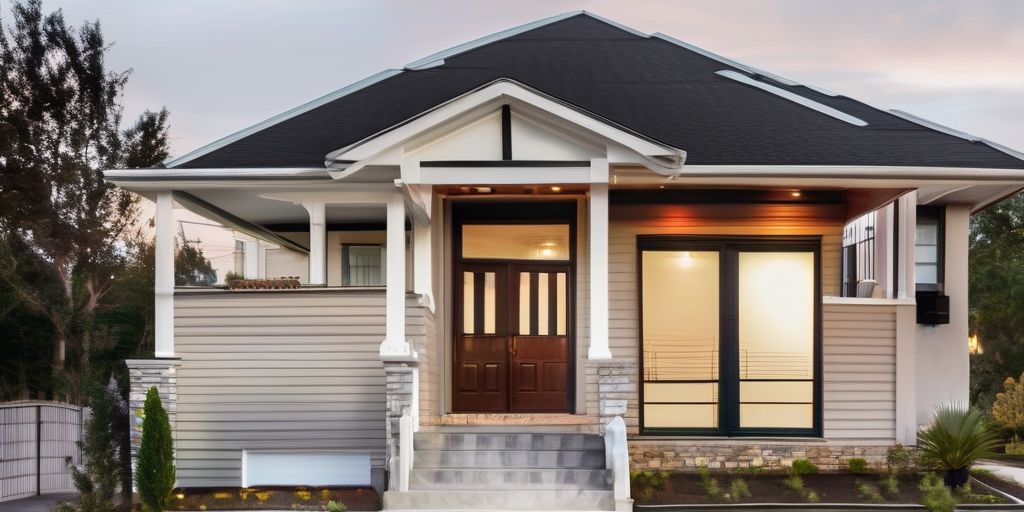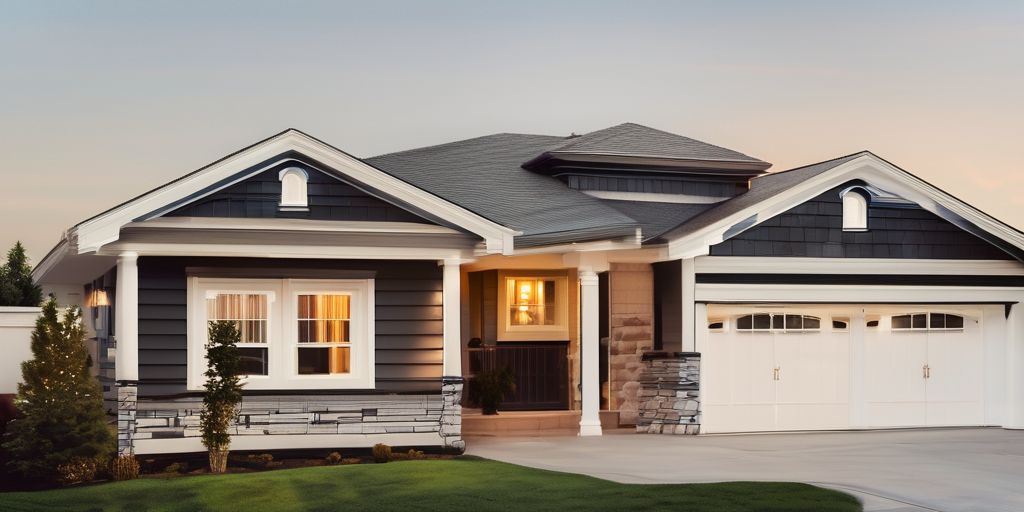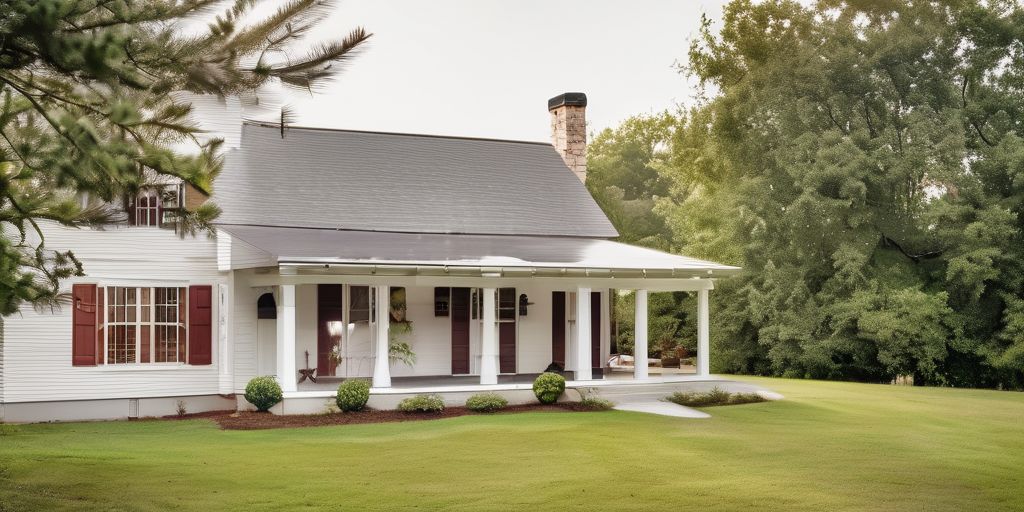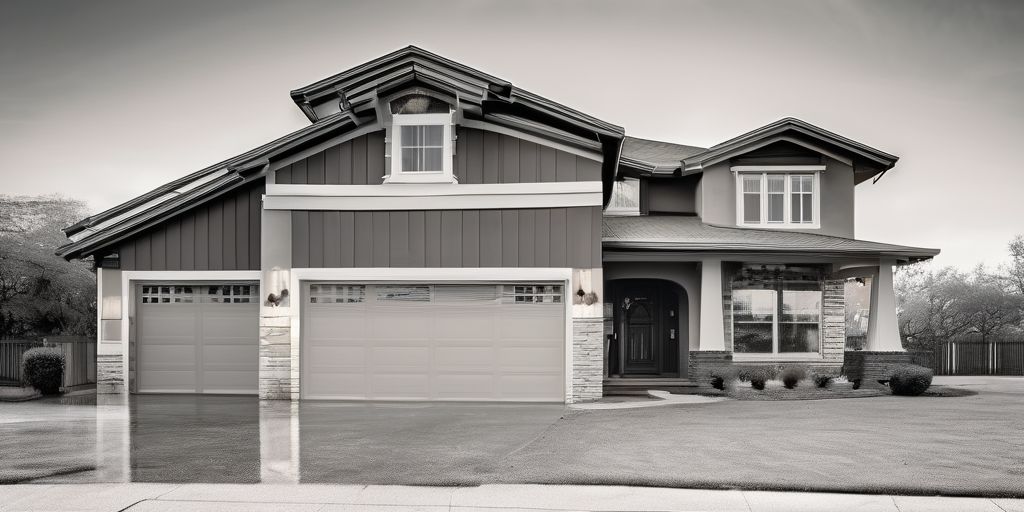Spray painting rough exteriors in Mississauga requires a blend of skill, the right materials, and an understanding of local weather conditions. This guide will walk you through the best practices, from choosing the right season to ensuring your paint job withstands the elements. Whether you’re a DIY enthusiast or considering hiring a professional, these insights will help you achieve a durable and visually appealing finish.
Key Takeaways
- Late spring to early fall is the best time for exterior spray painting in Mississauga due to stable weather conditions.
- Proper surface preparation, including cleaning, sanding, and priming, is crucial for a long-lasting paint job.
- Weatherproofing techniques and products can help protect your paint job from Mississauga’s unpredictable weather.
- Selecting the right type of paint and spray equipment is essential for achieving a professional finish.
- Hiring a professional spray painter can save time and ensure high-quality results, especially for complex projects.
The Best Seasons for Spray Painting in Mississauga
In Mississauga, the ideal time for exterior spray painting typically spans from late spring to early fall. During these months, the weather is generally more stable, with moderate temperatures and lower humidity levels. This period ensures that the paint adheres well and dries properly. However, always be mindful of sudden weather changes, especially in areas close to Lake Ontario, which can bring unexpected moisture.
Ideal Weather Conditions
The best weather conditions for spray painting include temperatures between 50°F and 85°F and humidity levels below 70%. These conditions help the paint to cure properly and prevent issues like blistering or peeling. It’s also important to avoid windy days, as wind can cause overspray and uneven application.
Planning Around Lake Ontario’s Weather
Lake Ontario significantly influences Mississauga’s weather patterns. The lake can cause sudden changes in humidity and temperature, which can affect your painting project. Always check the local weather forecast before starting your project and be prepared to adjust your plans if necessary. It’s also a good idea to have a backup plan in case of unexpected rain or high winds.
Benefits of Seasonal Timing
Choosing the right season for spray painting can offer several benefits:
- Better adhesion and curing: Moderate temperatures and low humidity levels help the paint adhere better and cure properly.
- Longer-lasting results: Properly cured paint is more durable and resistant to weathering.
- Reduced risk of issues: Painting in the right conditions minimizes the risk of problems like blistering, peeling, and uneven application.
Proper planning and preparation can save you time and money in the long run, ensuring a beautiful and long-lasting paint job.
Weatherproofing Your Paint Job
Weatherproofing your paint job is essential for ensuring its durability and longevity, especially in areas like Mississauga where weather conditions can be unpredictable. A good primer increases the longevity of your paint job by providing an additional layer of protection against environmental factors such as UV rays, rain, and humidity. This is particularly important for an exterior painter working in variable climates.
Importance of Weatherproofing
Weatherproofing your paint job helps to protect the surface from moisture and temperature fluctuations. This is crucial for maintaining the durability and appearance of your exterior surfaces. Without proper weatherproofing, paint can crack, peel, or fade more quickly, leading to more frequent maintenance and repainting.
Techniques for Weatherproofing
- Use a High-Quality Primer: A good primer can help protect the surface from moisture and temperature changes.
- Apply a Weather-Resistant Topcoat: This provides an extra layer of protection against the elements.
- Seal Cracks and Gaps: Before painting, make sure to seal any cracks or gaps in the surface to prevent moisture from seeping in.
- Multiple Thin Coats: Apply multiple thin coats of paint rather than one thick coat to ensure even coverage and better protection.
Common Weatherproofing Products
- Primers: Look for primers that are specifically designed for exterior use and offer moisture resistance.
- Topcoats: Weather-resistant topcoats can provide an additional layer of protection against UV rays and rain.
- Sealants: Use high-quality sealants to fill in any cracks or gaps before painting.
Proper weatherproofing is not just about applying the right products; it’s also about using the right techniques. For example, an exterior painter might say, “we spray it on, then brush it out,” to ensure the primer gets into all the cracks and crevices. This method helps to create a more durable and long-lasting finish.
Proper Surface Preparation for Spray Painting
Proper surface preparation is essential for a successful spray painting project, especially on rough exteriors. Here are the key steps to ensure your paint job lasts and looks great.
Cleaning the Surface
Start by cleaning the surface thoroughly. Use a pressure washer and a suitable cleaning solution to remove any debris, dust, or loose paint. A thorough scrubbing is a must before painting any exterior surface. This step ensures that dirt and broken-down paint residues, which can prevent fresh coats from adhering properly, are removed.
Sanding Techniques
Sanding is crucial for improving paint adhesion. Sand or scrape glossy or hard surfaces to create a smooth substrate. Focus on:
- Sanding any rough areas to create a smooth base.
- Repairing cracks and holes to ensure an even surface.
- Using the right grit of sandpaper for the material you’re working on.
Priming the Surface
Applying a primer is often necessary for enhanced paint bonding and durability. Once the primer has been applied, it is important to allow it to dry thoroughly before proceeding with the paint. This step is especially crucial for surfaces that are porous or have uneven tones. Skipping primer on surfaces that require it can lead to poor paint adhesion and durability issues.
Proper surface preparation can make all the difference in the longevity and appearance of your spray paint job. Taking the time to clean, sand, and prime will pay off in the long run.
Choosing the Right Paint and Equipment
Selecting the appropriate paint and equipment is essential for achieving a professional finish when spray painting rough exteriors in Mississauga. Here are some key considerations:
Types of Paint for Spray Painting
Choosing the right type of paint can make a significant difference in the outcome of your project. Consider the following:
- Latex Paint: Ideal for most exterior surfaces due to its durability and ease of cleaning.
- Oil-Based Paint: Offers a smooth finish but takes longer to dry and requires solvents for cleanup.
- Specialty Paints: Designed for specific surfaces or conditions, such as high humidity or extreme temperatures.
Selecting the Right Sprayer
The choice of sprayer is crucial for any exterior painting project. Ensure you have a high-quality sprayer that can handle the type of paint you’re using. Consider factors like:
- Sprayer Capacity: Choose a sprayer with a capacity that matches the size of your project.
- Power Source: Options include electric, gas, or battery-powered sprayers.
- Nozzle Options: Different nozzles are available for various spray patterns and paint types.
Maintenance of Spray Equipment
Proper maintenance of your spray equipment is vital for ensuring a long-lasting and efficient performance. Here are some tips:
- Clean the sprayer thoroughly after each use to prevent clogs and buildup.
- Regularly check and replace worn-out parts, such as nozzles and filters.
- Store the equipment in a dry, safe place to avoid damage from moisture or impact.
In Mississauga, it’s important to consider the local weather conditions when choosing your paint and equipment. The proximity to Lake Ontario can influence humidity levels, which in turn affects drying times and paint adhesion.
Common Mistakes to Avoid in Spray Painting
Spray painting can be a highly effective way to achieve a smooth, professional finish on rough exteriors. However, there are several common mistakes that can compromise the quality of your work. Avoiding these pitfalls will save you time, money, and frustration in the long run.
Skipping Surface Preparation
One of the most frequent errors is neglecting proper surface preparation. This step is essential for ensuring that the paint adheres well and lasts longer. Make sure to:
- Clean the surface thoroughly to remove dirt, grease, and other contaminants.
- Sand glossy or hard surfaces to improve paint adhesion.
- Apply primer on surfaces that require it for enhanced paint bonding and durability.
Incorrect Primer Application
Applying primer incorrectly can lead to poor paint adhesion and durability issues. To avoid this mistake:
- Use the right type of primer for the surface you’re working on.
- Apply the primer in thin, even coats rather than one thick layer.
- Allow sufficient drying time between coats to ensure a strong bond.
Ignoring Weather Conditions
Weather conditions play a crucial role in the success of your spray painting project. Ignoring them can result in uneven paint or missed spots. To mitigate this risk:
- Check the weather forecast and avoid painting on extremely humid or windy days.
- Be mindful of temperature fluctuations, especially in areas near Lake Ontario.
- Plan your project during seasons with stable weather conditions for the best results.
Pro Tip: Always consider the local climate, especially if you’re working near landmarks like the Credit River or Port Credit. This can help you adapt your techniques for optimal results.
Hiring a Professional Spray Painter in Mississauga
When it comes to spray painting rough exteriors in Mississauga, hiring a professional can make a significant difference in the quality and longevity of the paint job. Professional painters bring expertise, specialized equipment, and a keen eye for detail that ensures a flawless finish.
Impact of Mississauga’s Weather on Spray Painting
Humidity and Temperature Effects
Mississauga’s weather can be quite unpredictable, making it essential to plan your spray painting projects with care. High humidity levels can significantly affect the drying time of the paint, leading to potential issues like blistering or peeling. On the other hand, extremely low temperatures can cause the paint to thicken, making it difficult to apply smoothly. Always check the weather forecast before starting your project to avoid these complications.
Adapting Techniques to Weather
To achieve the best results, you may need to adjust your spray painting techniques based on the current weather conditions. For instance, during high humidity, consider using a dehumidifier to reduce moisture levels. In colder temperatures, you might need to use a paint conditioner to maintain the right consistency. These adjustments can help ensure a smooth and even application.
Long-term Maintenance Tips
Maintaining your spray-painted surfaces in Mississauga’s diverse weather conditions requires some ongoing effort. Regular inspections can help you spot early signs of wear and tear. Additionally, applying a weatherproof sealant can provide an extra layer of protection against the elements. This is especially important in areas close to Lake Ontario, where moisture levels can be higher.
Proper planning and technique adjustments are key to a successful spray painting project in Mississauga’s variable climate.
Mississauga’s weather can significantly impact the quality and longevity of spray painting projects. From humidity to temperature fluctuations, these factors can affect the adhesion and durability of the paint. To ensure a flawless finish, it’s crucial to choose a professional service that understands these local conditions. Visit our website to learn more about our specialized spray painting services and how we can help you achieve a stunning transformation for your home.
Conclusion
Spray painting rough exteriors in Mississauga presents unique challenges, but with the right techniques and timing, you can achieve a professional and long-lasting finish. By understanding the importance of proper surface preparation, choosing the ideal season, and weatherproofing your paint job, you can ensure that your project withstands the test of time. Whether you’re a DIY enthusiast or prefer to hire a professional, these insights will help you navigate the complexities of exterior spray painting in Mississauga. Remember, a little extra effort in planning and preparation can make all the difference in the final outcome.
Frequently Asked Questions
What are the best seasons for spray painting in Mississauga?
In Mississauga, the ideal time for exterior spray painting typically spans from late spring to early fall. During these months, the weather is generally more stable, with moderate temperatures and lower humidity levels. This period ensures that the paint adheres well and dries properly. However, always be mindful of sudden weather changes, especially in areas close to Lake Ontario, which can bring unexpected moisture.
What are the steps for proper surface preparation before spray painting?
Proper surface preparation includes cleaning, sanding, and priming the surface. These steps are crucial to avoid paint failure and achieve a long-lasting finish.
How does the weather in Mississauga affect exterior spray painting?
Mississauga’s weather can be unpredictable, with varying humidity and temperature levels. It’s important to check the weather forecast and choose the best season for spray painting to ensure optimal results. Weatherproofing your paint job can also help mitigate the effects of adverse weather conditions.
What are common mistakes to avoid when using primer?
Common mistakes to avoid when using primer include skipping surface preparation, incorrect primer application, and ignoring weather conditions. Proper planning and preparation can save you time and money in the long run, ensuring a beautiful and long-lasting paint job.
Why is weatherproofing important for spray painting?
Weatherproofing is important for spray painting because it helps protect the paint job from adverse weather conditions, such as rain, humidity, and temperature fluctuations. This ensures the longevity and durability of the paint job.
What are the benefits of hiring a professional spray painter in Mississauga?
Hiring a professional spray painter in Mississauga ensures quality and precision in the paint job. Professionals are knowledgeable about the best techniques, types of paint, and equipment to use, and they can provide a long-lasting and visually appealing result.

